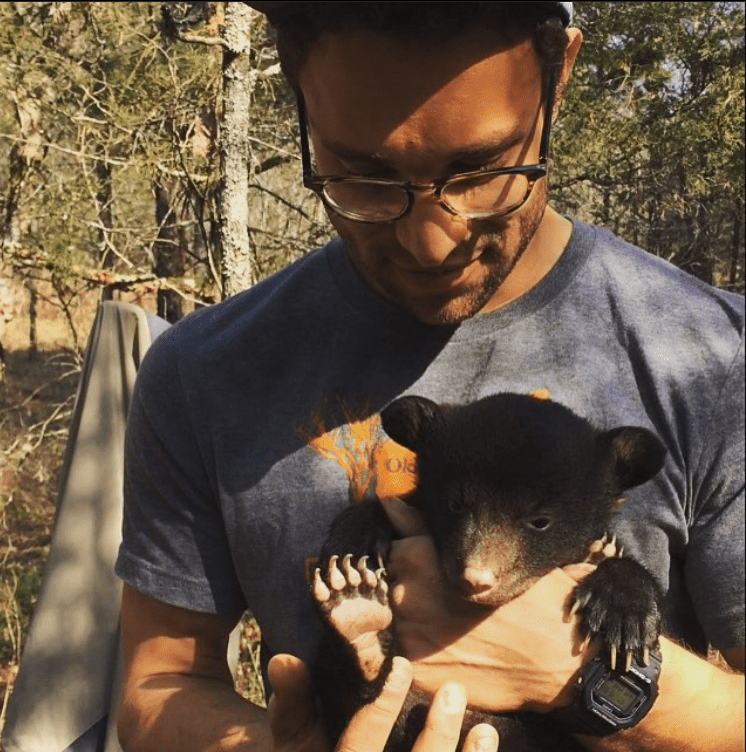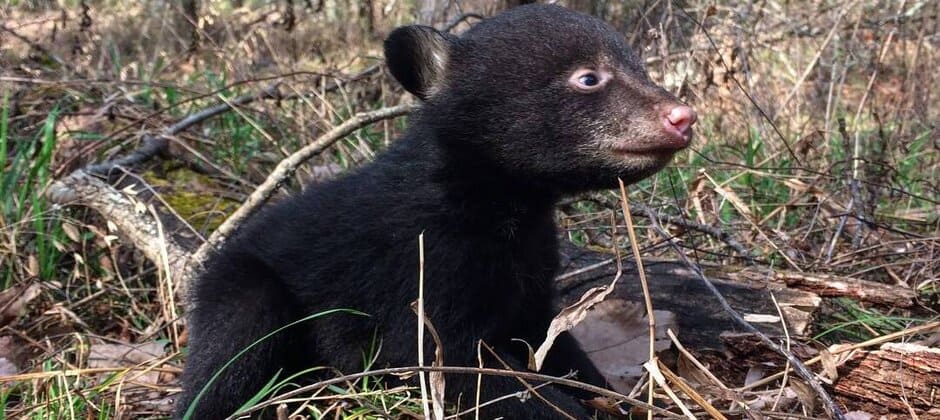Share this article
JWM: Oklahoma black bears use mostly wild resources
Black bears moving back into northeast Oklahoma after extirpation in the early 1900s are leery of humans and development, largely preferring wild resources to anthropogenic ones.
Recently, the bears have begun to naturally recolonize the state, coming in from Arkansas in its east.
Researchers wanted to better understand the resource use by black bears (Ursus americanus) in Oklahoma and how they used resources.
Elliot Lustig, a master’s student at Oklahoma State University at the time, lead a study tackling these questions in the Journal of Wildlife Management. To conduct their research, Lustig and his colleagues captured 23 bears — 13 females and 10 males — and fit them with GPS tracking collars from 2011 through 2016.

Elliot Lustig holds a black bear cub. Credit: Elliot Lustig
The team analyzed the GPS location data and found that the bears in Oklahoma typically avoided roads and other areas of human disturbance like buildings or parking lots. Lustig said it’s possible that they learned that behavior in Arkansas, where they encounter more hunters and dogs.
Unlike their behavior in some parts of the country, the Oklahoma bears also tended to avoided farms. “They weren’t eating people’s crops,” Lustig said.
Instead, they preferred sticking to areas like moist oak forests for foraging.
“The amount of food that was available in those type of forests was really attractive to bears,” Lustig said.
One exception to these trends was when it came to deer feeders, or corn-filled devices people use to bait deer for hunting or for wildlife watching.
“Bears would come in and just absolutely demolish the deer feeders,” Lustig said, adding that this trend should be watched for its potential to cause human-bear conflicts.
He said that the analysis also found much of the prime bear habitat is broken up or fragmented in some of the areas they are recolonizing. Lustig said it remains to be seen how the bears will continue to deal with this landscape.
This article features research that was published in a TWS peer-reviewed journal. Individual online access to all TWS journal articles is a benefit of membership. Join TWS now to read the latest in wildlife research.
Header Image: A bear cub in Oklahoma. Credit: Elliot Lustig








